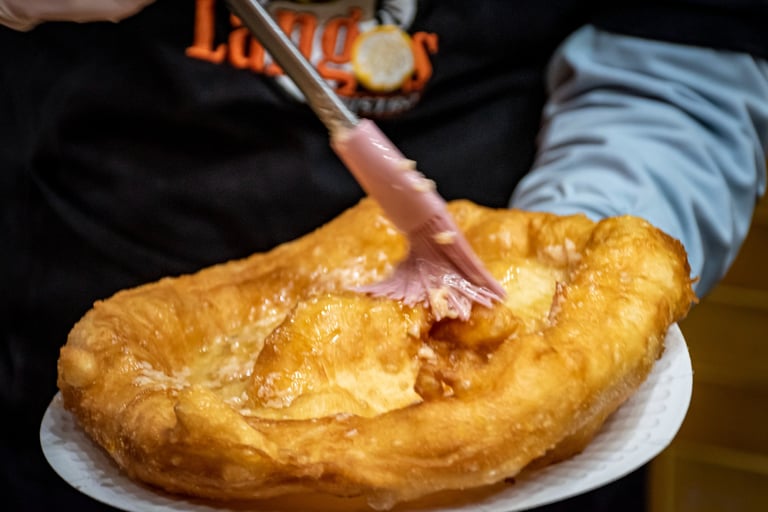The history of Lángos
If you’ve ever strolled through the bustling streets of Budapest or visited a Hungarian food market, chances are you’ve come across the mouthwatering aroma of freshly fried lángos. This crispy, golden delicacy is one of Hungary’s most beloved street foods, deeply rooted in the country’s culinary traditions. But where does lángos come from, and how did it become such a staple in Hungarian cuisine? Let’s explore the fascinating history and cultural significance of this iconic dish.
The Origins of Lángos
Lángos (pronounced lahn-gosh) has a history that dates back centuries, tracing its origins to the time of the Ottoman Empire. Some historians believe that the concept of deep-fried bread was introduced to Hungary by the Turks during their occupation in the 16th and 17th centuries. Others suggest that lángos evolved from ancient bread-baking traditions, where small pieces of dough were baked in the residual heat of wood-fired ovens.
The name lángos itself is derived from the Hungarian word láng, meaning “flame,” as it was originally prepared by placing the dough close to an open fire. Over time, this method transformed into deep-frying, which gave lángos its signature crispy exterior and soft, airy interior.
Lángos in Hungarian Cuisine
Traditionally, lángos was a simple dish made from just a few ingredients: flour, water, yeast, and salt. The dough was allowed to rise, then stretched into a flat round shape and fried in hot oil until golden brown. While classic lángos is delicious on its own, it is often topped with a variety of ingredients that enhance its flavor.
The most popular lángos variation is the sajtos-tejfölös lángos, which is generously slathered with tejföl (Hungarian sour cream) and sprinkled with grated cheese. Other common toppings include garlic butter, ham, bacon, sausage, or even sweet options like powdered sugar or Nutella.
Why is Lángos So Popular?
Lángos is more than just a street food; it’s a part of Hungarian culture. Whether enjoyed at a local market, a summer fair, or a lakeside food stall at Lake Balaton, lángos is synonymous with comfort food. It is affordable, filling, and incredibly satisfying, making it a favorite among locals and tourists alike.
Hungarians also take pride in their lángos recipes, with many families passing down their own versions from generation to generation. While traditional lángos remains a staple, modern variations continue to emerge, incorporating contemporary flavors and ingredients.
Where to Find the Best Lángos in Budapest
If you’re visiting Budapest and want to experience authentic lángos, there are several must-visit spots:
Lángos Bistro Gozsdu – A top choice for fresh, crispy lángos with a variety of delicious toppings just next to the entrance of the Gozsdu Court
Lángos Bistro Astoria – Located near Astoria metro station, this spot is famous for its generously portioned lángos.
Great Market Hall – A historic location where you can find traditional lángos made fresh daily.
Conclusion
Lángos is more than just a deep-fried bread; it’s a symbol of Hungarian culinary heritage. Whether you prefer the classic sajtos-tejfölös lángos or a unique gourmet variation, this beloved dish is a must-try for anyone exploring Hungary. So next time you visit Budapest, make sure to indulge in this crispy, flavorful delight – it’s an experience you won’t forget!
Planning to try lángos in Budapest? Visit us at Lángos Bistro and taste the tradition for yourself!


